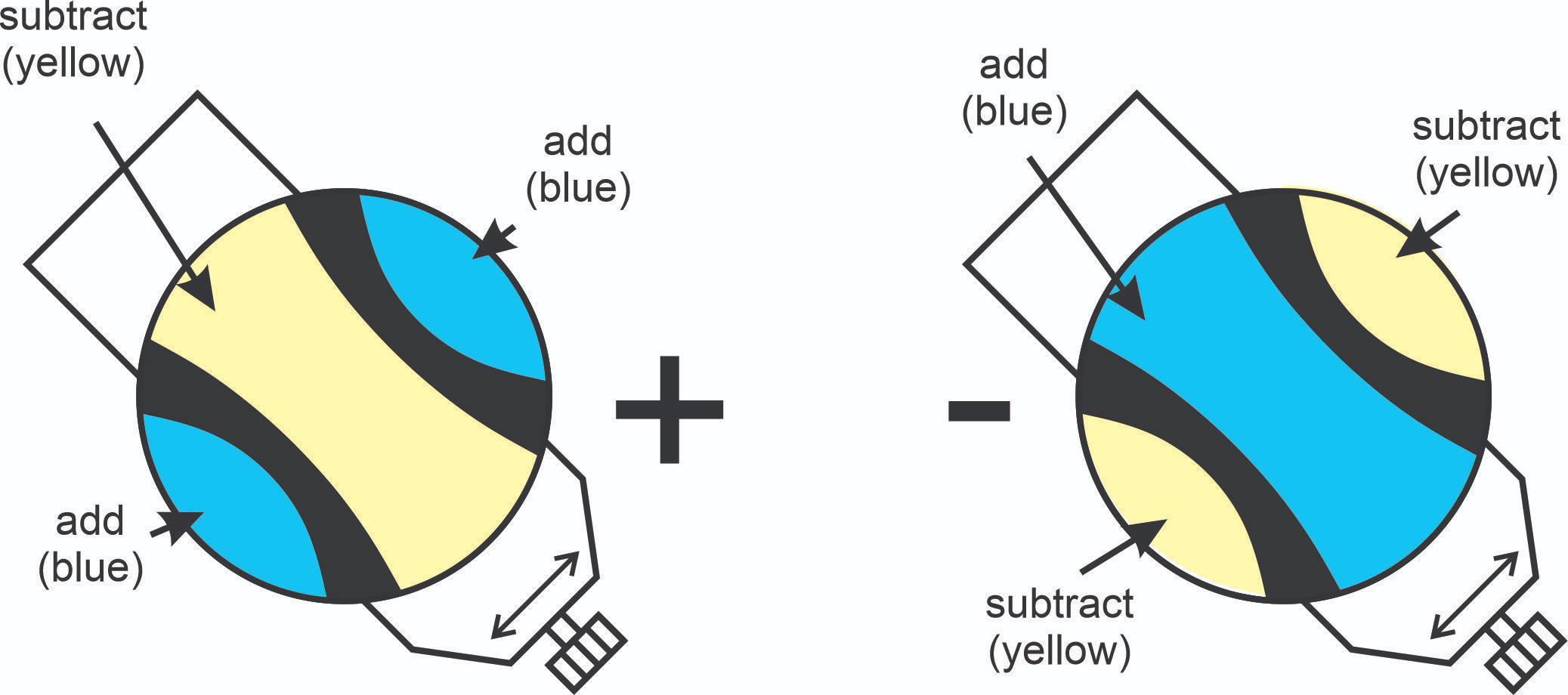Chapter 5
1/51
Earn XP
Name | Mastery | Learn | Test | Matching | Spaced |
|---|
No study sessions yet.
52 Terms
Polarized light microscopy
microscopy technique that uses polarized light to study specimens; allows us to see otherwise undiscernible characteristics. One approach includes examining grains of crystals to better see details
Opaque minerals
Minerals with metallic luster; will not transmit light unless the mineral grains are much thinner than normal thin sections. Appear black under a microscope (magnetite)
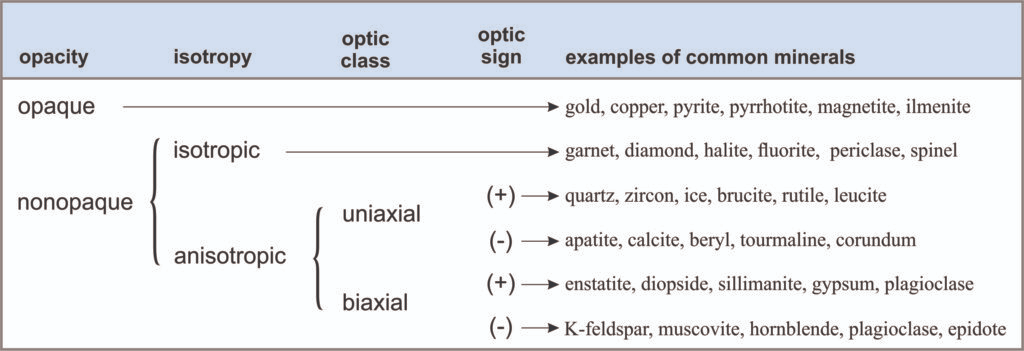
Non-opaque minerals
Minerals that do transmit light. Can be isotropic (having the same properties in all directions) or anisotropic (having different optical properties in different directions)
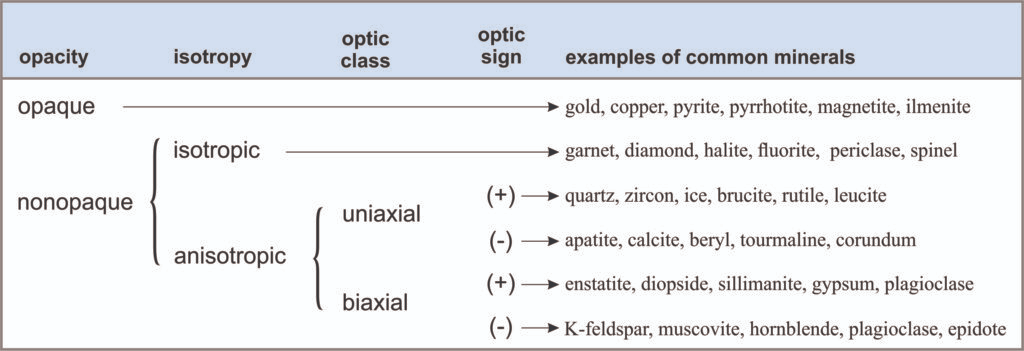
Anisotropic subdivisions
uniaxial and those that are biaxial, and according to whether minerals have a positive or negative optic sign
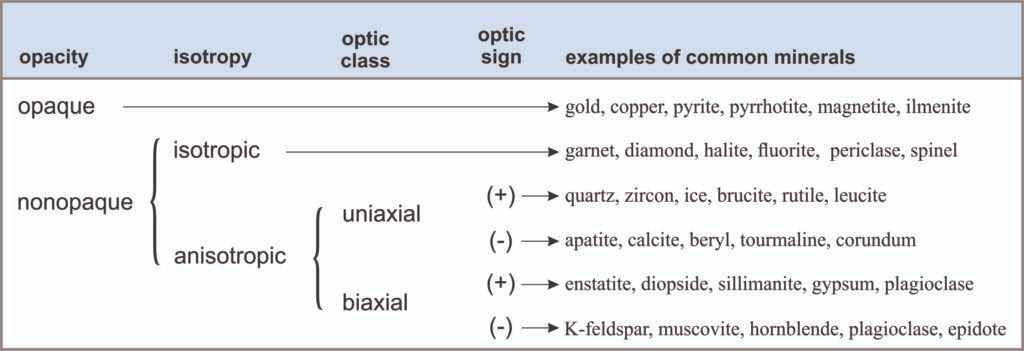
Microscopic relationships between mineral grains allow us to determine the order in which
minerals crystallized from a magma, and we can identify minerals produced by alteration or weathering long after the crystals first formed
When the velocity of light is altered as it passes from one medium (for example, air) to another…
the wavelength changes, but the frequency remains the same
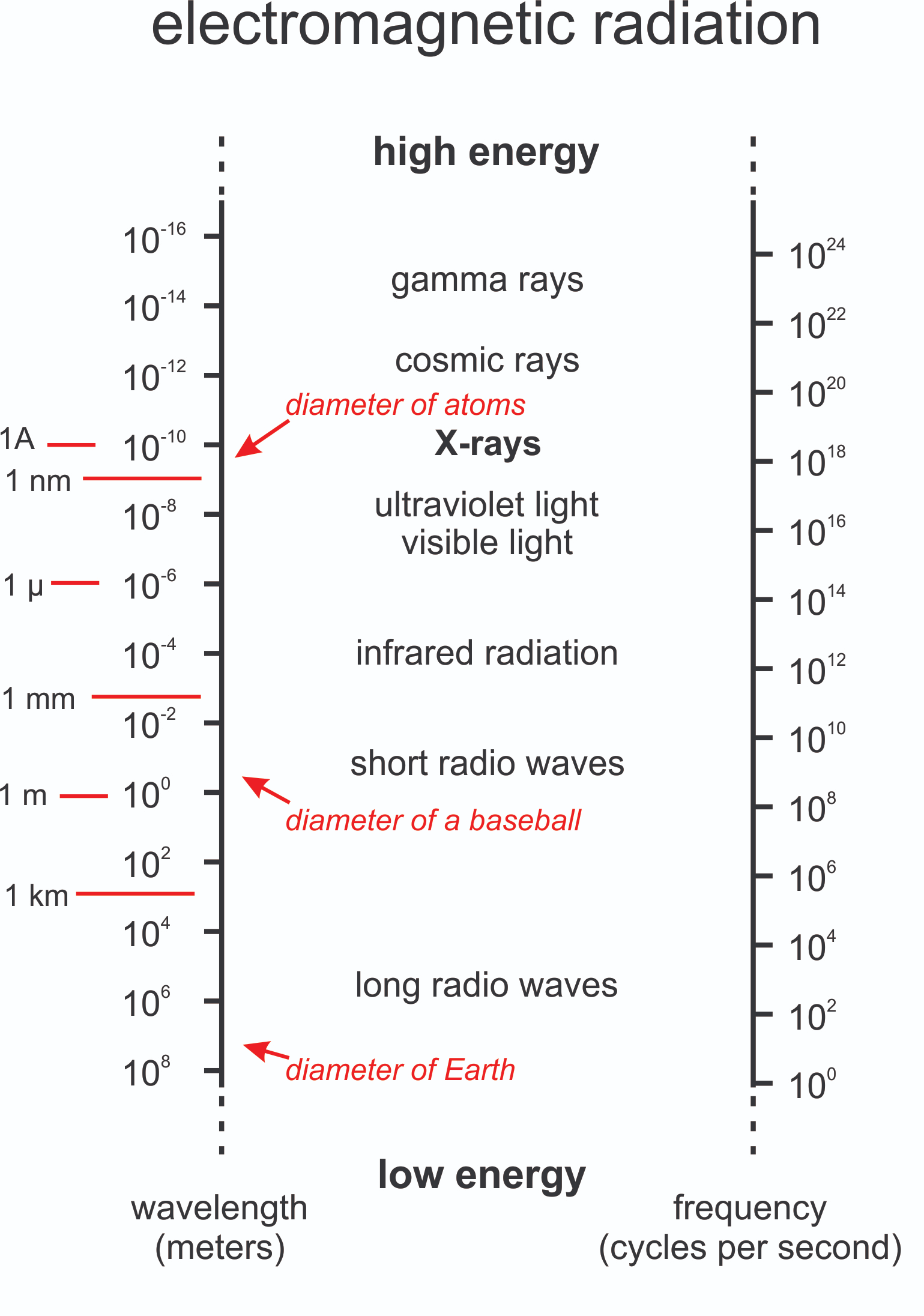
If wavelengths corresponding to all the primary colors are present with equal intensities
The light appears white
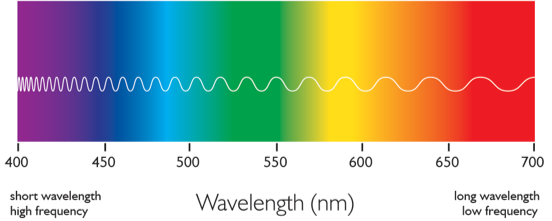
Polychromatic
Many-colored light; contains a range, or spectrum, of wavelengths. Polychromatic light can be separated into different wavelengths in many ways
Monochromatic
Light with one color. When one wavelength is isolated
Phase
whether a wave is moving up or down at a particular time
In-phase wave
If two waves move up and down at same times. If not, they are out of phase

Interference phenomena
the optical properties of minerals that result from the passing of light waves through them
Constructive interference
When waves are in phase, no energy is lost
Destructive interference
When waves are out of phase, both waves appear to “consume” each other’s energy (law of conservation of energy)
For perfect constructive or destructive interference to occur, waves must be
of the same wavelength but they may have different amplitudes
Refractive index (n)
the ratio of the velocity (v) of light in a vacuum to the velocity in the crystal. Always has a value greater than 1. High values of n correspond to materials that transmit light slowly
n = vair / vcrystal
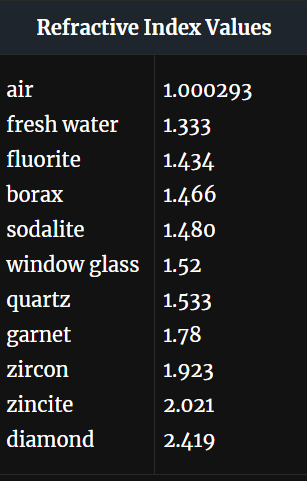
Refraction
Objects that appear to bend as they pass from air into another medium—When light rays pass from one medium to another (for example water and air) with a different refractive index
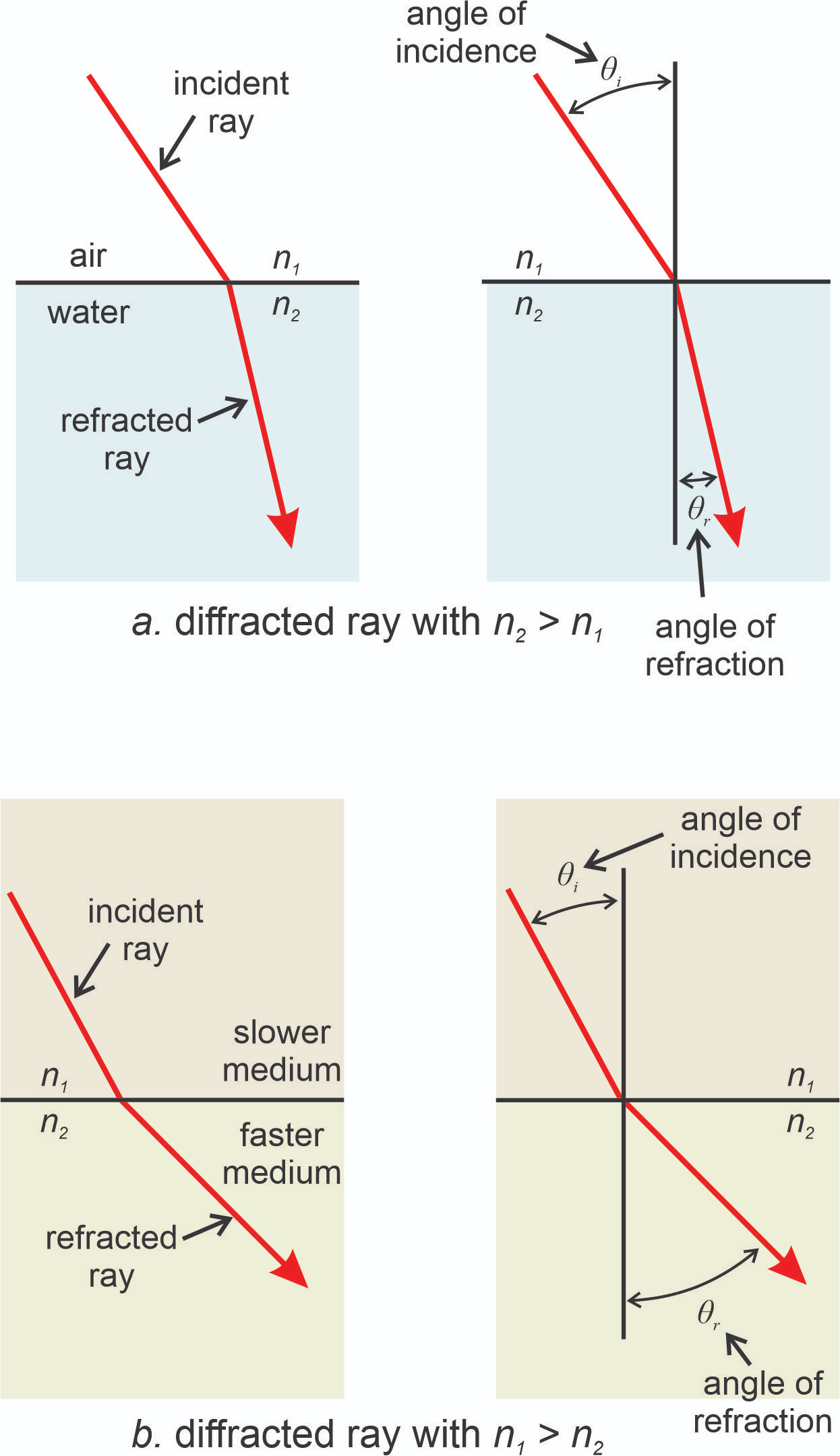
When refraction occurs, a light beam bends toward the medium with
Higher refractive index, where the light travels slower, because one side of the beam moves faster than the other
Angle of incidence (θi)
the angle between the beam and a perpendicular to the interface
Angle of refraction (θr)
After crossing the interface, the angle between the beam and a perpendicular to the interface
θr = sin-1[(ni/nr) x sin θi]
Snell’s Law
Relationship between the angle of incidence (θi) and the angle of refraction (θr)
sin(θi) / sin(θr) = vi / vr = nr / ni
where vi and vr are the velocities of light through two media, and ni and nr are the indices of refraction of the two media
Internal reflection
If the angle of incidence is small (drawing b), most light escapes and is refracted at some angle to the crystal face, but some light reflects back into the crystal

As the angle of incidence increases, the proportion of light that is reflected increases. True or False?
True
Critical angle of refraction
The limiting value of θi. Common method for determining refractive index of a mineral
Why do some crystals (diamond) with a high refractive index exhibit internal reflection that makes them sparkle?
If the angle of incidence is greater, none of the light will escape; the entire beam will be reflected inside the crystal (figure e and f)

Dispersion
How the velocity of light in a crystal varies with the light’s color. Different colors of light follow different paths through a crystal because they refract at different angles
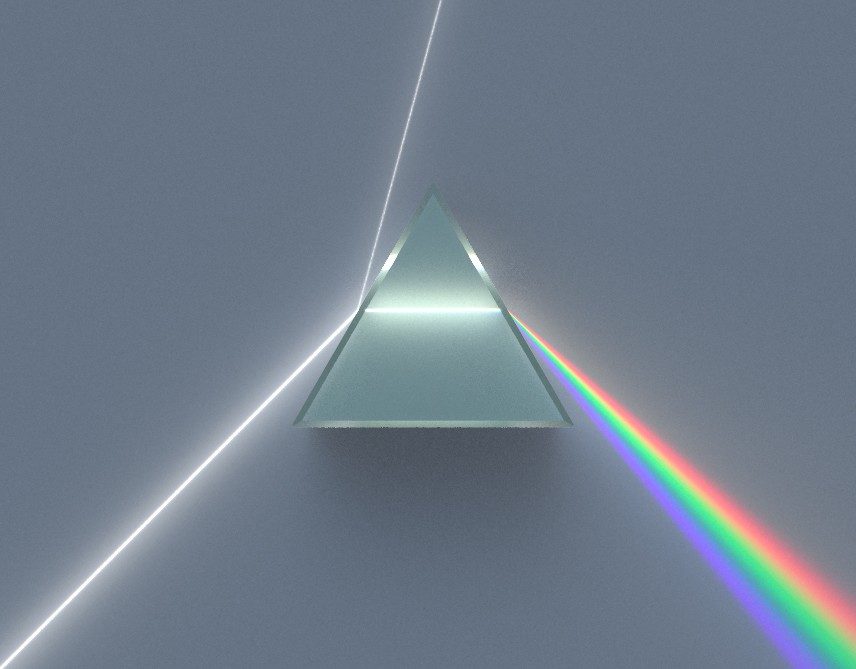
Dispersion and refractive index determine
the play of colors (fire). For example, diamond has high dispersion and high refraction. If not for dispersion, diamonds might sparkle, but the sparkles would all be the same color
Minerals with low dispersion generally appear
dull, no matter how well-cut or faceted
Polarizing filter
Causes light waves that pass through to be filtered/stopped. Some waves reflect, whether horizontal or vertical, depending on the surface. Eliminates glare and helps to isolate one wave
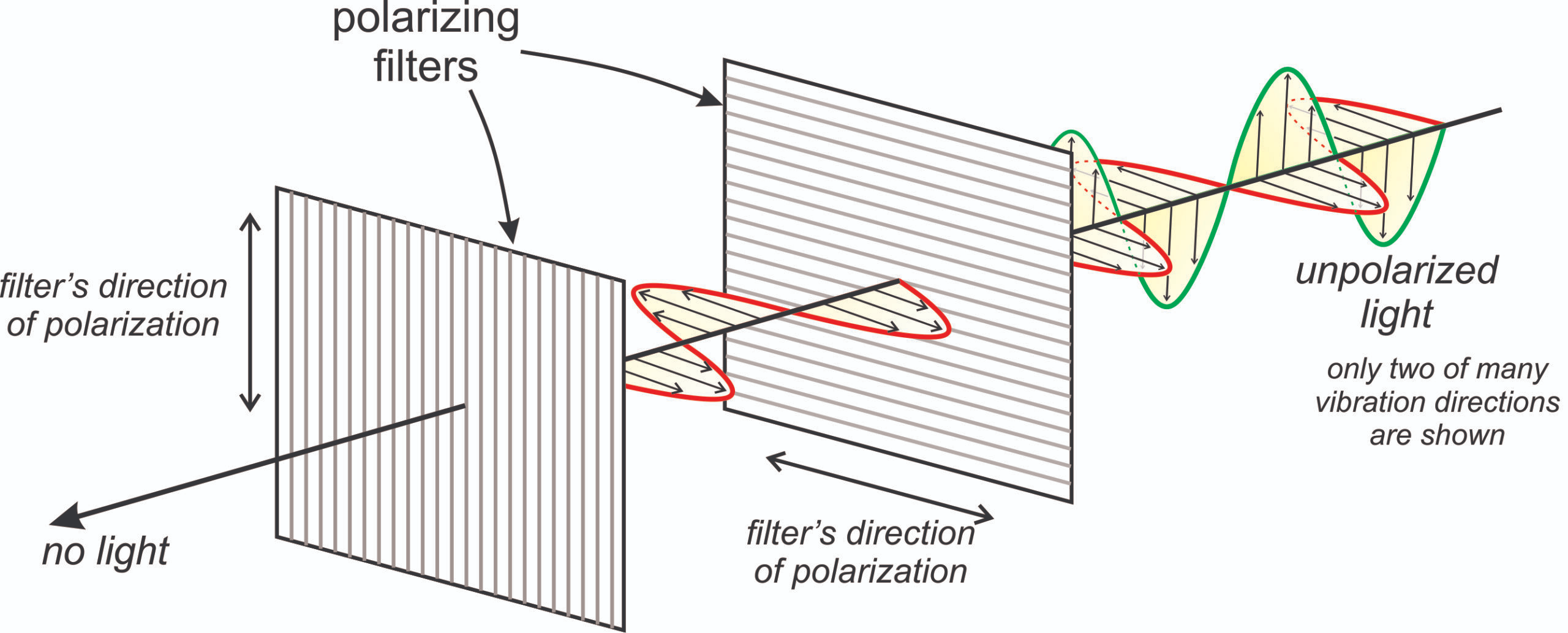
PPL characteristics
If a mineral is opaque or non-opaque
Crystal shape/habit
Cleavage
Color and pleochroism (some colors appear differently from different angles. Amphiboles are an example)
Relief/Becke lines (how well grains stand out)
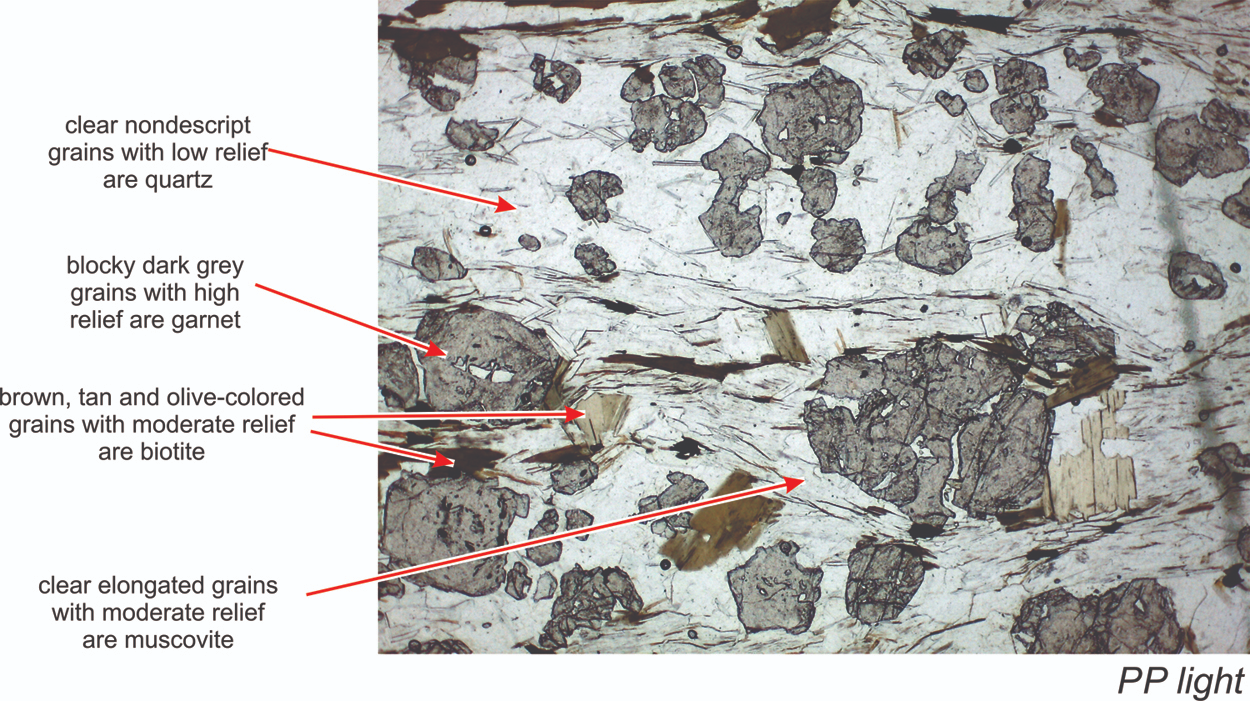
(High) positive relief
Minerals with high refractive indices; their index of refraction is greater than that of the epoxy. They also show structural flaws, such as scratches, cracks, or pits, unlike those with low refractive indices (garnet, biotite, quartz)
Negative relief
Minerals with very low refractive indices show high relief (termed negative relief) in thin section because their index of refraction is much lower than that of the epoxy
XPL characteristics
If a mineral is anisotropic or isotropic
Viewing a mineral with crossed polars (upper polarizer)
Detecting presence of interference colors
Detecting anomalous interference colors (not represented)
Twinning, zoning, and undulatory extinction
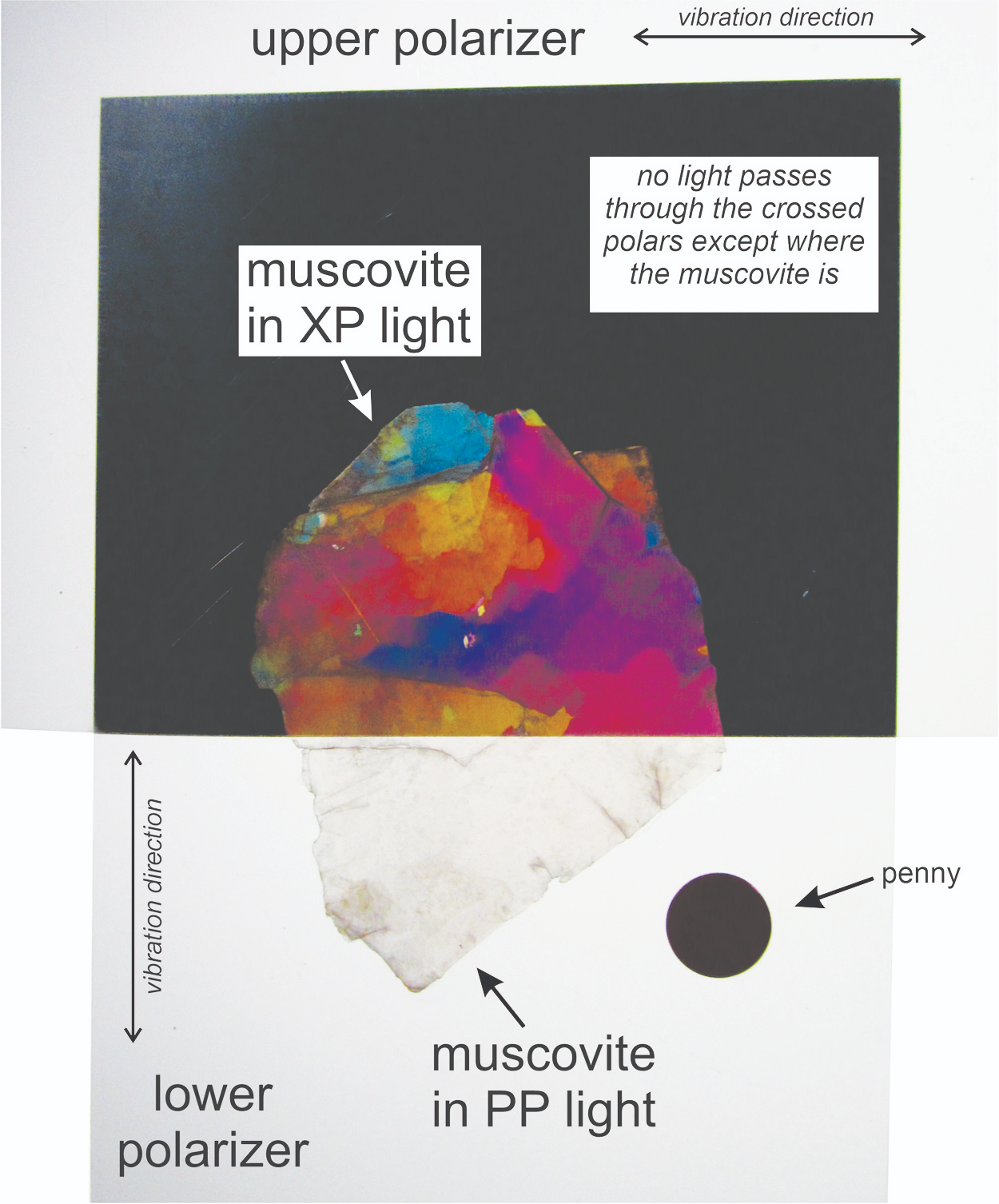
Undulatory extinction
different parts of a crystal go to extinction at different times with stage rotation
Minerals whose crystals belong to the cubic system are
isotropic; their atomic arrangement is the same along all crystallographic axes (garnet, sphalerite, and fluorite). Minerals in other systems are anisotropic
Interference colors
Unrelated to true mineral color. Pigments that shift colors when viewed from different angles/through XP light. Depend on grain orientation

Anomalous interference colors
not represented on color chart. May result if minerals have highly abnormal dispersion, are deeply colored, or for several other reasons (chlorite, epidote, zoisite, jadeite, tourmaline, and sodic amphiboles)
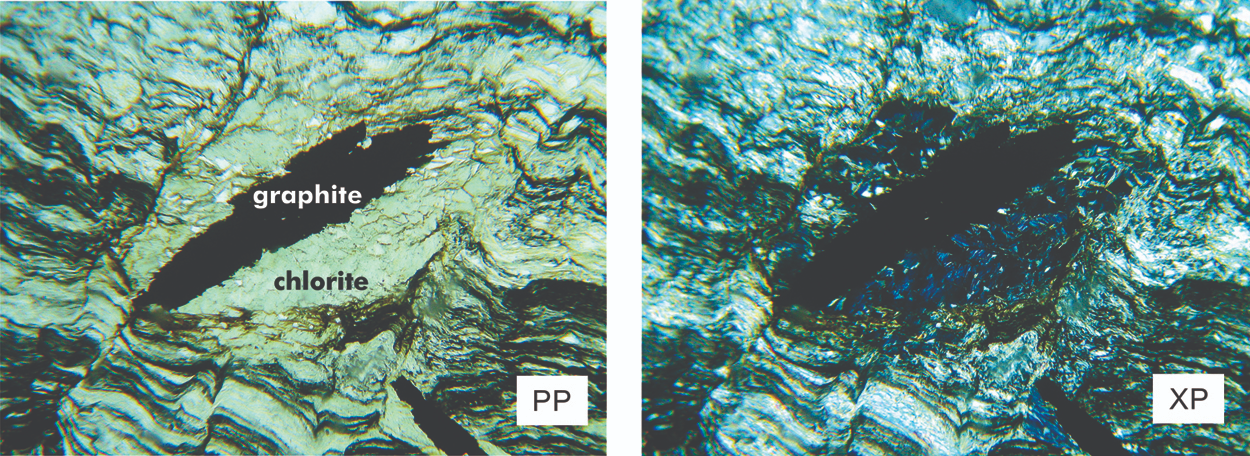
Double refraction
the splitting of a light beam into two perpendicularly polarized rays (all randomly oriented anisotropic minerals)
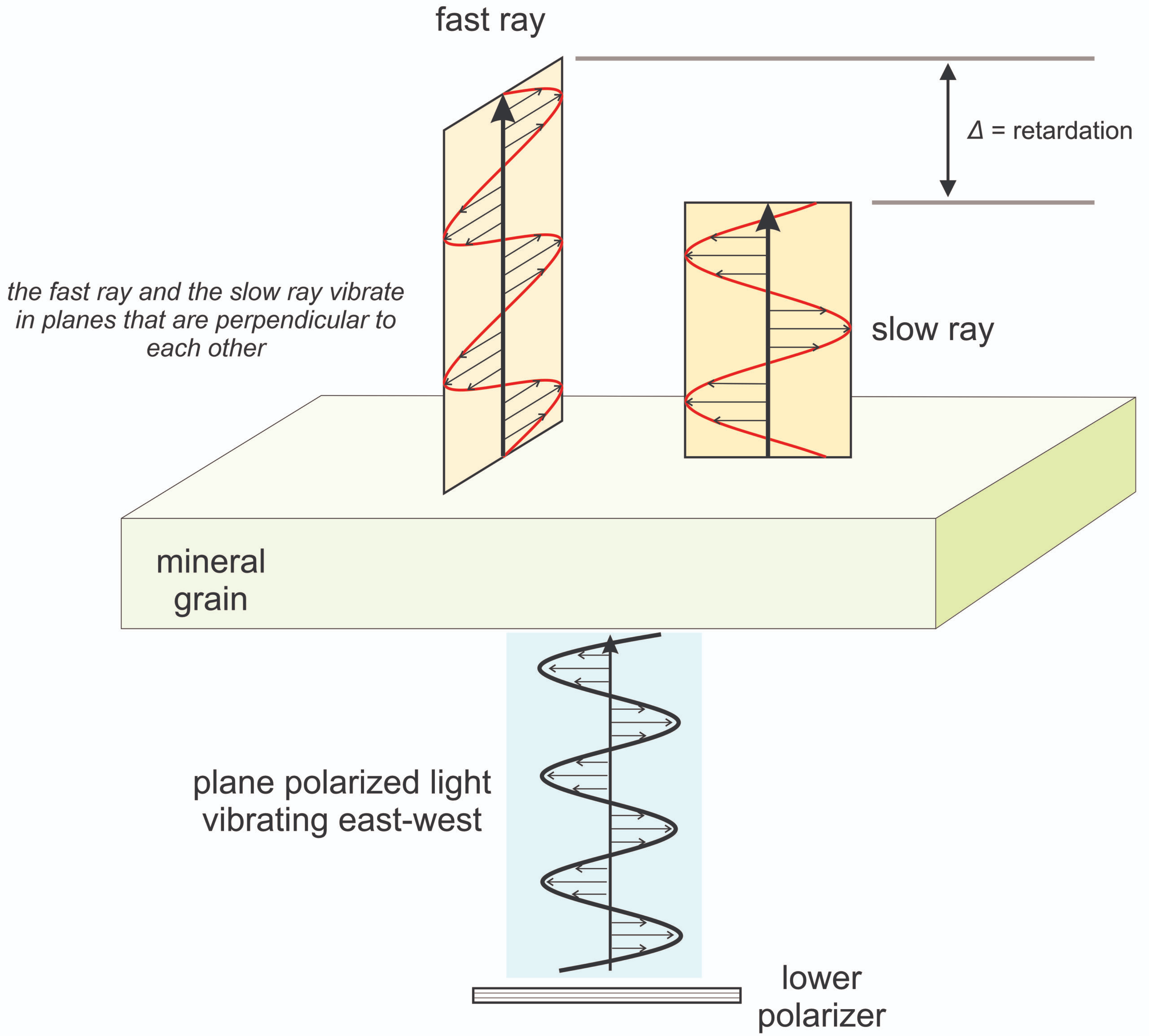
Apparent birefringence
The difference in the indices of the fast ray and the slow ray. (slow-fast). Varies depending on the atomic orientation in the crystal and the direction light is traveling

Michel-Lévy Color Chart
Horizontal axis is retardation; it directly correlates with interference color (shown as vertical color swatches). The vertical axis is grain thickness. The diagonal lines and numbers on the top and right side of the chart show birefringence
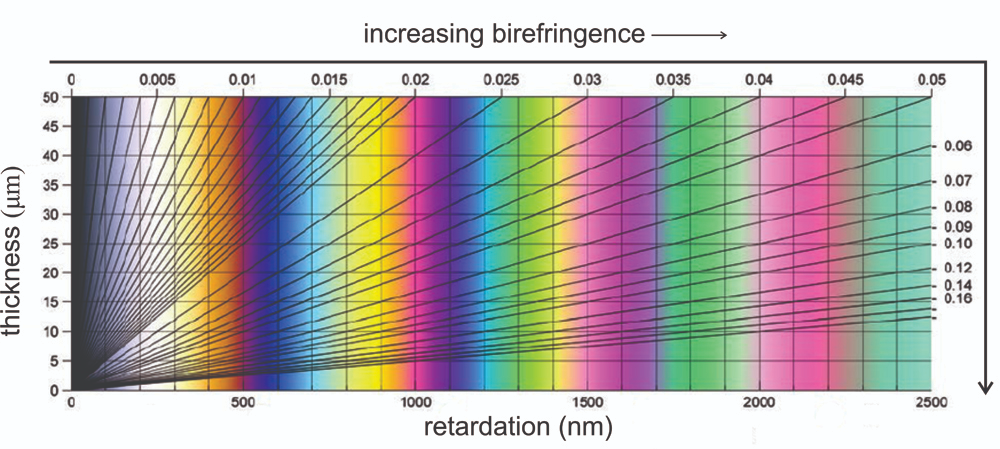
Maximum interference colors for common minerals

First-order colors
If retardation is slightly greater than white → grey, yellow, orange, or red interference colors will appear when we rotate the stage. Correspond to a retardation of 200 nm-550 nm
Second and third-order colors
violet to red interference colors
Uniaxial minerals
Tetragonal or hexagonal crystal systems. One optic axis that coincides with the c-axis. Maximum value of birefringence in uniaxial crystals is the absolute value of the difference between ω (parallel to optic) and ε (perp to optic)
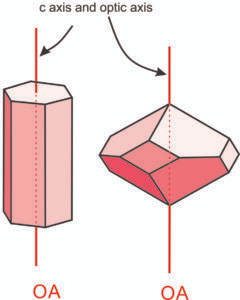
Two uniaxial classes
f ω < ε, the mineral is uniaxial positive ( + ).
If ω > ε , the mineral is uniaxial negative (-)
Biaxial minerals
Two optic axes; orthorhombic, monoclinic, and triclinic systems. Axes are not coincident with crystallographic axes (a, b, or c). Have refractive indices that vary between two limiting values that change in orientation to light.
The indices of refraction for light vibrating parallel to X, Y, and Z are α, β, γ
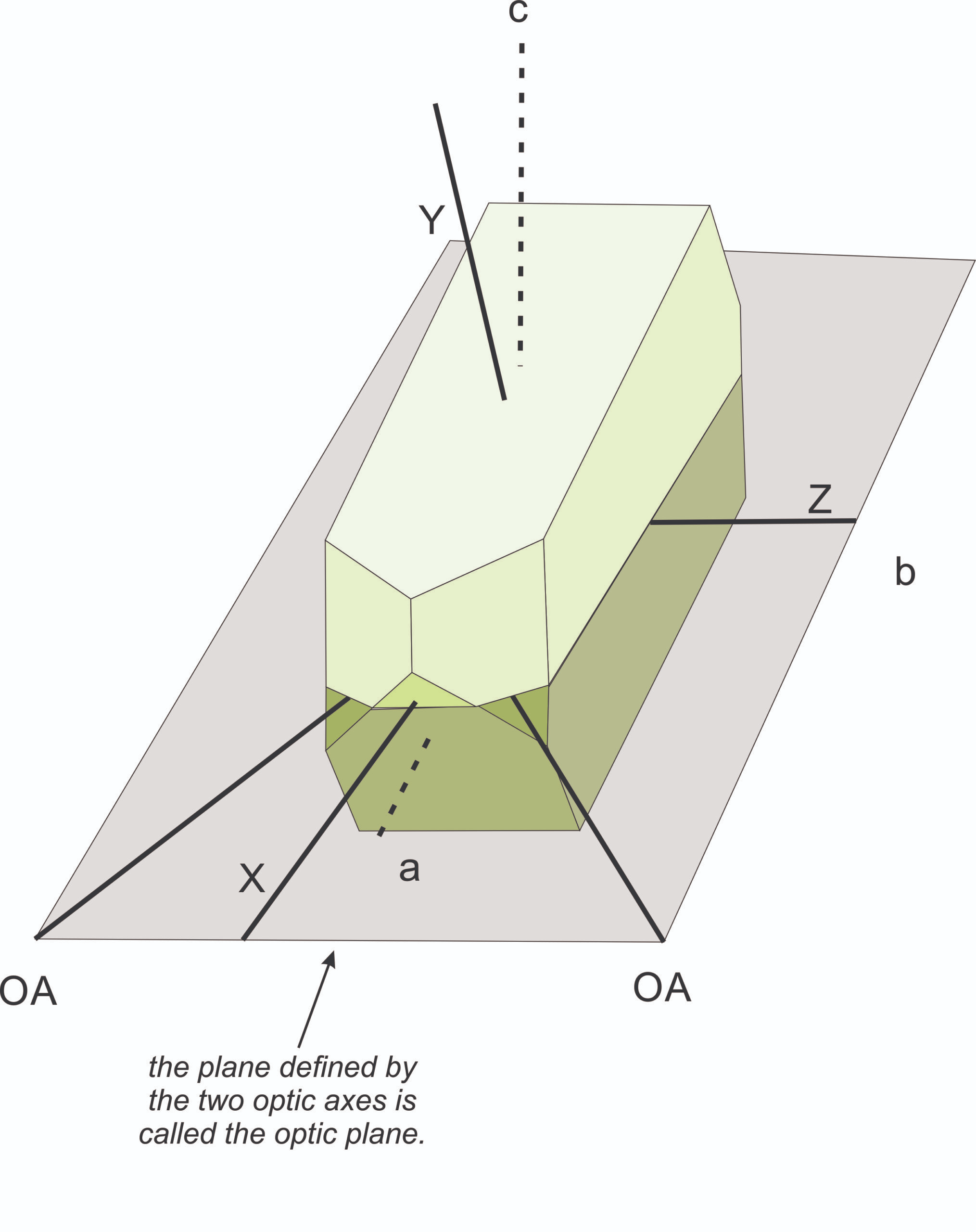
Two biaxial classes
In biaxial positive minerals, the intermediate refractive index β is closer in value to α than to γ.
In biaxial negative minerals, it is closer in value to γ
Parallel extinction
Some hexagonal, tetragonal, and orthorhombic minerals. Go extinct when their cleavages or directions of elongation are parallel to the upper or lower polarizer
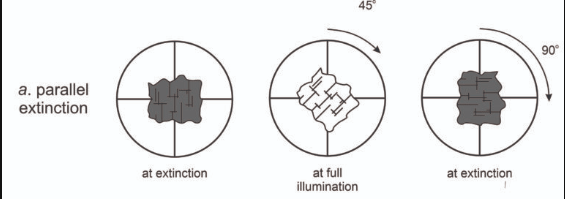
Inclined extinction
Many monoclinic and all triclinic crystals. Go extinct when their cleavages or directions of elongation are at angles to the upper and lower polarizer
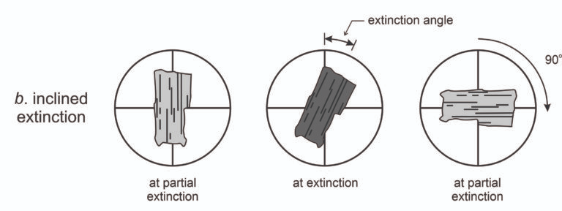
Symmetrical extinction
Minerals that go extinct at angles symmetrical with respect to cleavages or crystal faces

Isogyres
Dark bands or curves that appear in interference figures. Indicate where light waves that are vibrating parallel to the polarizer have passed through a crystal
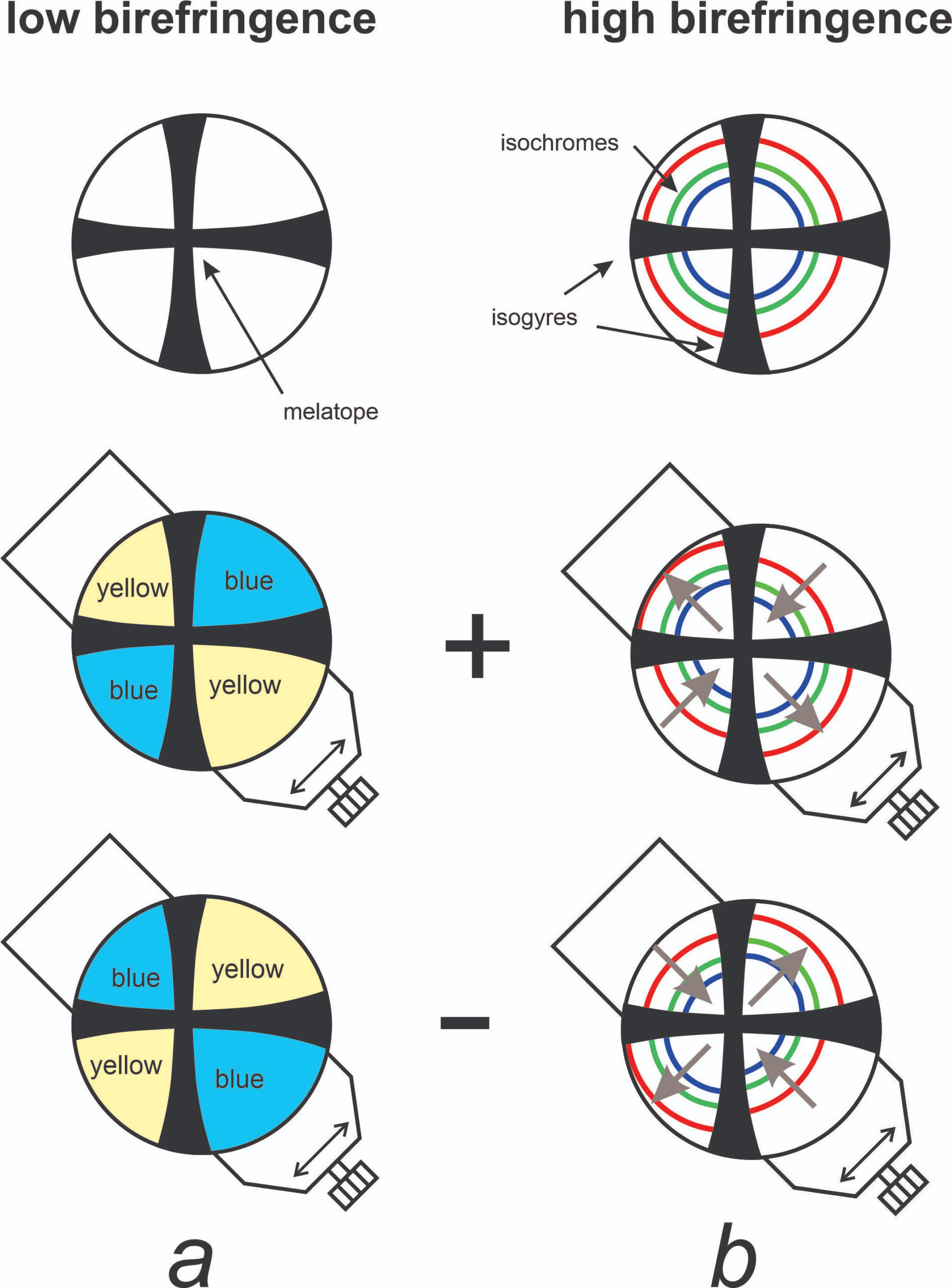
How to determine optic sign (+ or -)
For positive minerals, colors move inward in the southwest and northeast quadrants and outward in the northwest and southeast quadrants. For negative minerals, the motion is opposite
